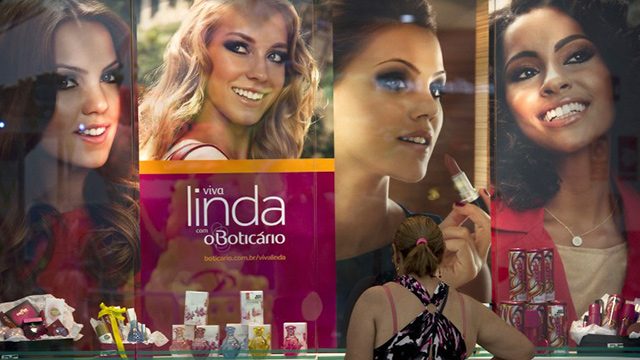SUMMARY
This is AI generated summarization, which may have errors. For context, always refer to the full article.

RIO DE JANEIRO, Brazil – In Brazil, women primarily wear their hair long, and need to tackle the country’s generally hot, humid climate when they style it. They also demand a wide range of sun protection creams.
Beauty industry giants such as L’Oreal, Unilever and Procter & Gamble that are looking to crack key emerging markets like Brazil are quickly adapting their product lines to suit local tastes.
In the South American country, where women use an average of five products a day, the investment is a crucial one – but quickly pays dividends, industry experts say.
The changes “mainly involve offering new colors and textures to suit the needs and expectations of these new consumers,” according to Gaelle de la Fosse, an expert in consumer goods and retail with the Roland Berger consultancy in Paris.
But companies must also find the right balance between expanding their product offers and keeping costs in check, she added.
L’Oreal, the world’s leading beauty group, just launched a new investment program in Brazil – the number four market after the United States, Japan and China, and one expected to double in size by 2025.
Product lines in Brazil must be extremely diverse, given its ethnic make-up – skin tones and hair textures differ widely.
Blaise Didillon, who heads L’Oreal’s R&D team in Brazil, says there are at least eight types of hair.
“The challenge of adapting… is so important that there is value in being close to the markets, in order to serve them better,” notes de la Fosse.
L’Oreal – currently number four in Brazil – is learning that lesson, with plans to open a new regional R&D center in Rio de Janeiro in 2016 and “micro-distributors” selling products in the favelas of Rio and Sao Paulo.
Using local ingredients
Oru Mohiuddin, a cosmetics analyst at London-based consultancy Euromonitor International, says tailoring products to emerging markets has become much easier.
“In the past, we only really saw shampoos and basic anti-aging products. Now, it’s much more targeted – for example, hair products with special conditioners in Latin America,” she said.
Companies are using local ingredients to entice consumers. In Brazil, babassu oil is used in hair products.
Such products – developed with local expertise – can then sometimes be distributed in other countries with similar needs.
Skin care items created by Vichy and La Roche-Posay specifically for Brazil are now sold elsewhere. Versatile BB creams – a cream that acts as an all-in-one moisturizer, primer and sunscreen and first developed for Asian women – are now widely available around the world.
New paths of distribution
Distribution in emerging markets also requires new approaches. Sometimes, it can be as simple as smaller and cheaper packaging, according to de la Fosse. Other times, new sales locations are found.
In addition to its presence in the hair salons of Brazil’s favelas, L’Oreal has also set up small stand-alone Maybelline kiosks in big-city shopping areas and “derma centers” in pharmacies across 50 major Brazilian cities – complete with a consultant.
The make-up kiosks model is going to be used in Mexico and Dubai.
Multinationals are as ever under pressure in emerging markets from homegrown brands with a loyal clientele, said Mohiuddin, citing Revlon and Garnier’s withdrawal from China.
In Brazil, the top two beauty brands are still local – Natura and Boticario. They are followed by Unilever, L’Oreal and Avon.
For de la Fosse, Africa is the “final frontier” for the industry.
“It’s a market with strong growth and enormous potential,” with hundreds of millions of people,” she said.
The industry giants are already making their move. Unilever has launched Motions, an Africa-specific hair care line.
“The biggest hurdle is the diversity,” with more than 50 countries, de la Fosse noted.– Rappler.com
Add a comment
How does this make you feel?
There are no comments yet. Add your comment to start the conversation.